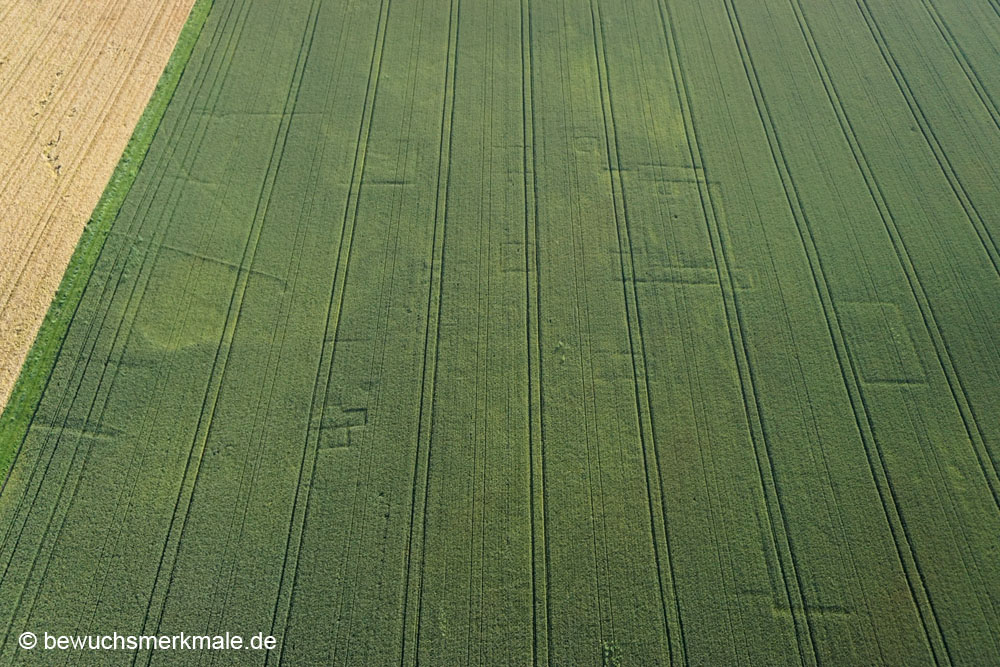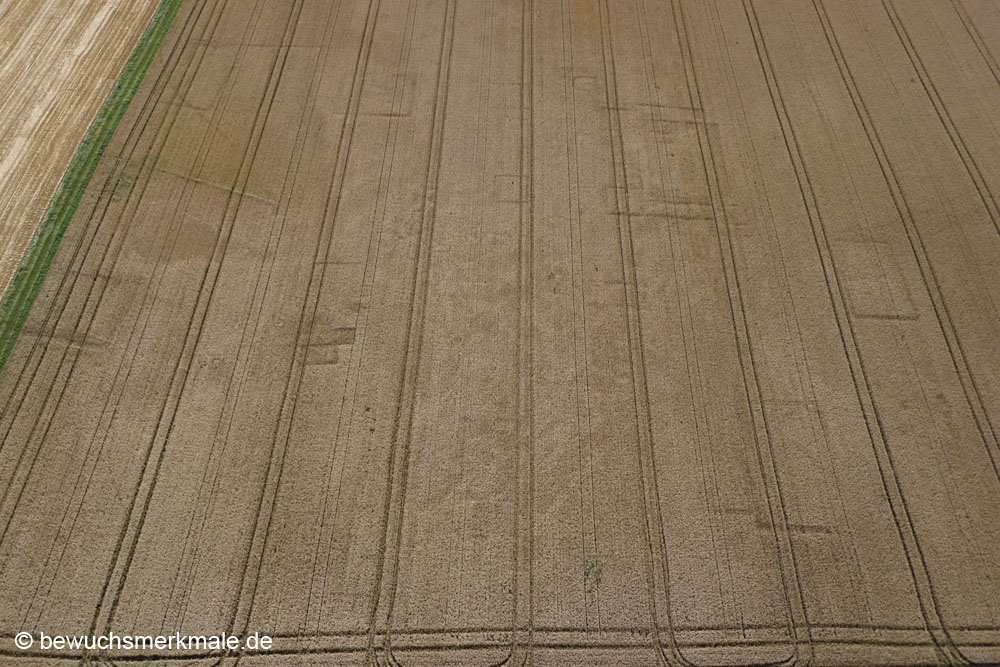Negative vegetation features of a Roman villa rustica in a wheat field
At the end of April 2019, Klaus Leidorf discovered a previously unknown, almost complete villa rustica on the basis of negative vegetation features in a winter wheat field[1]. During a second survey in early June 2019, the vegetation characteristics were much worse due to the rainy May. After the author learned of this new discovery, the new site was flown by drone in late June 2019. Contrary to expectations, the images again show the ground plans of the villa rustica in the mature winter wheat excellently.

At the time of grain ripening shortly before the harvest, the newly found archaeological monument was flown over again.

[1] Linck 2020_1
[2] Linck 2020_2
